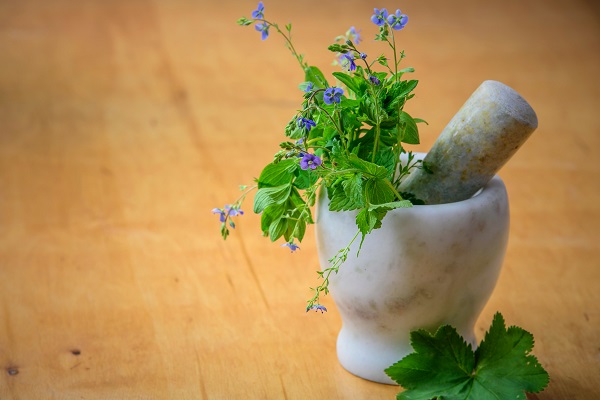
Alternative medicine is a term that encompasses a broad range of healing practices, therapies, and treatments that fall outside of the scope of mainstream medical practices. It often involves non-conventional therapies, such as herbal remedies, acupuncture, chiropractic care, and holistic approaches that focus on treating the person as a whole rather than just addressing specific symptoms. While some forms of alternative medicine are controversial, others have gained significant popularity due to their perceived benefits and effectiveness in treating various conditions. In this article, we will explore the history, types, benefits, challenges, and growing popularity of alternative medicine.
A Brief History of Alternative Medicine
The roots of alternative medicine can be traced back to ancient civilizations, where herbal remedies, spiritual healing, and natural therapies were the norm. In ancient Egypt, India, China, and Greece, traditional healing practices were deeply intertwined with cultural and religious beliefs. For example, Ayurveda (the traditional medicine system of India) and Traditional Chinese Medicine (TCM) have existed for thousands of years and continue to be widely practiced today.
Western medicine, as we know it today, evolved over time from these traditional practices. However, with the rise of modern scientific methods and technological advances in the 19th and 20th centuries, the medical establishment became more focused on evidence-based approaches and pharmaceuticals. This led to a decline in the use of alternative therapies, which were often seen as unscientific or unproven.
However, in the latter half of the 20th century, there was a resurgence of interest in alternative medicine. People began to seek out holistic, natural, and preventative approaches to healthcare as they became more concerned about the potential side effects of pharmaceutical drugs and the limitations of conventional treatments.
Types of Alternative Medicine
There are numerous types of alternative medicine, each with its own unique approach to healing. Some of the most popular and widely used alternative therapies include:
- Herbal Medicine: One of the most common forms of alternative medicine, herbal medicine involves using plant-based remedies to treat various ailments. Herbs like ginseng, echinacea, and turmeric have long been used for their therapeutic properties. Herbal medicine is based on the belief that plants contain compounds that can help restore balance in the body and promote healing.
- Acupuncture: Originating in ancient China, acupuncture is based on the belief that energy, or “qi,” flows through the body along specific pathways known as meridians. Acupuncturists use fine needles to stimulate specific points on the body to restore balance and promote the body’s natural healing processes. Acupuncture is often used to treat pain, anxiety, stress, and digestive issues.
- Chiropractic Care: Chiropractic medicine focuses on the relationship between the spine and the nervous system. Chiropractors believe that misalignments in the spine, known as subluxations, can interfere with the body’s ability to heal itself. By performing spinal adjustments, chiropractors aim to restore proper alignment and improve overall health.
- Homeopathy: Homeopathic remedies are believed to trigger a healing reaction in the body by exposing it to minuscule amounts of the substances that cause similar symptoms.
- Naturopathy: Naturopathic medicine focuses on the body’s inherent ability to heal itself. Naturopaths use a variety of natural treatments, such as nutrition, herbal medicine, hydrotherapy, and lifestyle changes, to support the body’s self-healing process. Naturopathy emphasizes prevention and the treatment of the root cause of illness rather than just addressing symptoms.
- Massage Therapy: Massage therapy involves manipulating the soft tissues of the body to promote relaxation, relieve muscle tension, and improve circulation. There are various types of massage, including Swedish, deep tissue, and shiatsu, each with its own techniques and benefits.
- Meditation and Mind-Body Practices: Practices such as meditation, yoga, and Tai Chi are often used as forms of alternative medicine to improve mental and physical health. These practices focus on reducing stress, enhancing relaxation, and promoting mindfulness. Research has shown that regular meditation and yoga can help lower blood pressure, reduce anxiety, and improve overall well-being.
- Energy Medicine: Energy medicine includes practices like Reiki, Healing Touch, and Therapeutic Touch, which are based on the idea that the body has an energy field that can be manipulated to promote healing. Practitioners use their hands or other tools to influence the body’s energy field, balancing the flow of energy and supporting the body’s natural healing abilities.
Benefits of Alternative Medicine

One of the primary reasons people turn to alternative medicine is the perceived benefits it offers, including:
- Holistic Approach: Many alternative therapies focus on treating the whole person, including their physical, mental, and emotional health. This holistic approach can lead to a greater sense of well-being and balance, addressing underlying causes rather than just symptoms.
- Fewer Side Effects: Many alternative therapies, particularly herbal medicine and acupuncture, are considered to have fewer side effects compared to conventional pharmaceuticals. For people seeking treatments with a lower risk of adverse reactions, alternative medicine can be an appealing option.
- Focus on Prevention: Alternative medicine often emphasizes the importance of prevention and maintaining good health through diet, exercise, and lifestyle choices. This proactive approach can help people avoid developing chronic conditions and maintain better overall health.
- Personalized Care: Alternative medicine practitioners often take the time to understand their patients’ individual needs and create personalized treatment plans. This personalized care can foster a deeper sense of trust and collaboration between the patient and the healthcare provider.
- Empowerment: Many alternative therapies encourage patients to take an active role in their own healing process. Practices like yoga, meditation, and nutritional counseling can empower individuals to make positive changes in their lifestyle and improve their health in the long term.
Challenges and Criticisms of Alternative Medicine

While alternative medicine has gained a large following, it is not without its critics. Some of the challenges and criticisms associated with alternative medicine include:
- Lack of Scientific Evidence: One of the primary criticisms of alternative medicine is the lack of rigorous scientific evidence supporting many of its claims. While some alternative therapies, such as acupuncture and certain herbal remedies, have shown promising results in studies, others have not been thoroughly tested or proven effective through clinical trials.
- Safety Concerns: Although many alternative therapies are considered safe, some can carry risks, especially if used improperly or in combination with conventional treatments. For example, certain herbs can interact with prescription medications, leading to harmful side effects. It is essential for individuals to consult with a healthcare provider before using alternative treatments, particularly if they are already taking other medications.
- Regulation and Licensing: In many countries, alternative medicine is not as strictly regulated as conventional medicine. This lack of oversight can lead to the practice of alternative therapies by individuals who may not have proper training or qualifications. It is important for patients to seek qualified and licensed practitioners to ensure they are receiving safe and effective care.
- Cost and Accessibility: Alternative medicine can be expensive, and in many cases, insurance plans do not cover alternative treatments. This can make alternative therapies less accessible to individuals who are on a budget or lack insurance coverage. Additionally, not all forms of alternative medicine are available in every location, limiting access to those living in rural or underserved areas.
The Growing Popularity of Alternative Medicine
Despite these challenges, the popularity of alternative medicine continues to grow. According to surveys, a significant portion of the population uses some form of alternative therapy, with people seeking out treatments for conditions such as chronic pain, stress, anxiety, and digestive issues. Many people also turn to alternative medicine as a complement to conventional treatments, using it in conjunction with traditional healthcare to support overall well-being.
The rise of social media, health blogs, and online forums has contributed to the increased interest in alternative medicine. These platforms allow individuals to share their experiences, learn about different therapies, and connect with practitioners. As a result, more people are discovering the potential benefits of alternative medicine and incorporating it into their healthcare routines.
Conclusion
Alternative medicine offers a wide range of treatments and therapies that focus on the whole person, using natural, holistic, and non-invasive methods. While it may not replace conventional medical care, many people turn to alternative medicine for its perceived benefits, such as fewer side effects, a focus on prevention, and a more personalized approach to health. As the demand for alternative therapies continues to grow, it is essential for individuals to make informed decisions, consult with healthcare professionals, and ensure that they are receiving safe and effective care.
As our understanding of both traditional and modern medicine continues to evolve, the integration of alternative therapies with conventional healthcare may offer the best of both worlds, providing patients with a more comprehensive approach to healing and well-being.
FAQ:
1. What is alternative medicine, and how does it differ from conventional medicine?
Answer: Alternative medicine refers to a wide range of healing practices and therapies that are not typically part of mainstream medical treatments. It includes practices like acupuncture, herbal medicine, homeopathy, and chiropractic care. Unlike conventional medicine, which often focuses on symptom management and pharmaceutical solutions, alternative medicine tends to emphasize natural healing, prevention, and a holistic approach to health.
2. What are some popular types of alternative medicine that people are turning to in 2025?
Answer: In 2025, some of the most popular types of alternative medicine include acupuncture, which is used for pain management and stress relief, herbal remedies for various health conditions, and mindfulness practices such as meditation and yoga for emotional well-being. Additionally, integrative medicine, which combines conventional medical treatments with alternative therapies, is growing in popularity as patients seek comprehensive care.
3. How does alternative medicine approach chronic diseases or conditions like arthritis and fibromyalgia?
Answer: Alternative medicine approaches chronic diseases by focusing on the whole body rather than just the symptoms. For conditions like arthritis or fibromyalgia, therapies such as acupuncture, massage therapy, herbal treatments, and dietary changes are often used to reduce inflammation, alleviate pain, and improve mobility. Many alternative treatments also focus on boosting the immune system and improving mental health to support overall well-being.
4. Is there scientific evidence supporting the effectiveness of alternative medicine?
Answer: While scientific research on alternative medicine is ongoing, there is growing evidence supporting the effectiveness of certain therapies. For example, acupuncture has been shown to help with pain management and stress reduction, while some herbal treatments have proven benefits for conditions like anxiety and digestive issues. However, not all alternative practices have been rigorously tested, and it’s important for patients to consult healthcare professionals before choosing alternative treatments.
